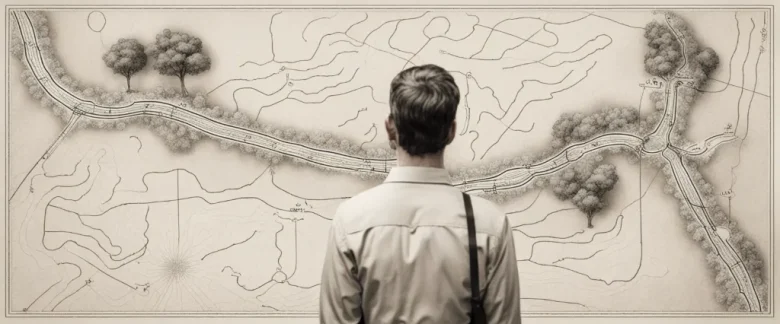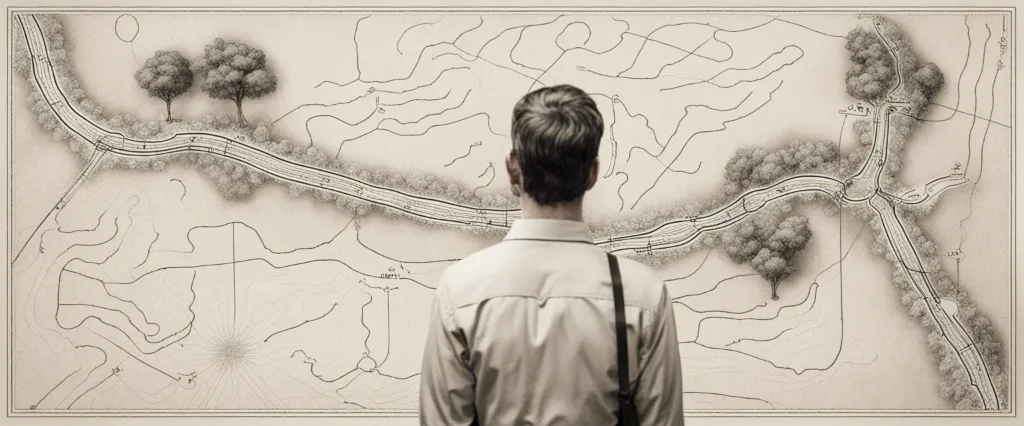In “Maps of Meaning,” Dr. Jordan B. Peterson presents a groundbreaking exploration of the essential role that myths and narratives play in shaping human behavior and belief systems. As a clinical psychologist and professor of psychology, Peterson delves into the intricate interplay between individual psychology, cultural structures, and the collective unconscious. Through his meticulous analysis of ancient myths, religious texts, and psychological research, Peterson offers readers a profound understanding of the underlying patterns that govern our thoughts, emotions, and actions. This book serves as a guide for navigating the complexities of life and finding meaning in a chaotic world.
Chapter 1: Exploring the significance of myths and symbols in human cognition.
In Chapter 1 of “Maps of Meaning,” Jordan B. Peterson delves into the significance of myths and symbols in human cognition. He explores the ways in which myths and symbols shape our understanding of the world and guide our behavior. Peterson argues that myths and symbols are essential tools that human beings use to make sense of the chaos and complexity of the world around them.
According to Peterson, myths and symbols offer a framework through which individuals can interpret their experiences and establish a sense of order and meaning in their lives. He suggests that these archetypal stories and symbols are deeply ingrained in human psychology and play a crucial role in shaping our beliefs, values, and behaviors.
Peterson also highlights the connection between myths and symbols and the creation of meaning in our lives. By exploring and analyzing the underlying themes and narratives present in myths and symbols, individuals can gain a deeper understanding of themselves and the world they inhabit.
Overall, Chapter 1 of “Maps of Meaning” sets the stage for a deeper exploration of the role that myths and symbols play in human cognition and offers insight into how these cultural artifacts shape our understanding of reality.
Chapter 2: Understanding the structure of belief systems and their impact on behavior.
In Chapter 2 of “Maps of Meaning,” Jordan B. Peterson explores the structure of belief systems and their influence on human behavior. He explains that beliefs are not isolated concepts; rather, they form interconnected networks that shape our perceptions, emotions, and actions. These belief systems are deeply ingrained in our psyche and are influenced by a combination of cultural, biological, and personal experiences.
Peterson argues that our beliefs serve as maps that guide us through the complex terrain of life, helping us make sense of the world and providing a framework for understanding our place within it. When these beliefs are challenged or disrupted, it can lead to feelings of disorientation, anxiety, and even despair.
Furthermore, Peterson discusses the profound impact that belief systems can have on our behavior. He explains how individuals or societies that hold onto rigid, dogmatic beliefs may become closed off to new ideas, leading to stagnation or conflict. Conversely, a more flexible and adaptive belief system can foster curiosity, creativity, and growth.
Overall, this chapter emphasizes the importance of understanding the structure of our beliefs and how they shape our behavior, as well as the need for self-reflection and openness to change in order to navigate the complexities of the world effectively.
Chapter 3: Analyzing the role of narratives in shaping individual and societal meaning.
In Chapter 3 of Maps of Meaning, Jordan B. Peterson delves into the significance of narratives in influencing both individual and societal beliefs and values. He argues that narratives serve as the fundamental tools through which humans make sense of their experiences and convey meaning. By analyzing various mythological stories and cultural narratives, Peterson demonstrates how these tales shape our understanding of the world and our place within it.
Peterson explores the psychological implications of narratives, emphasizing their role in providing a sense of order and direction in a chaotic world. He also discusses how narratives can influence our beliefs, attitudes, and behaviors, ultimately shaping our individual identities and contributing to the formation of societal norms and values.
Throughout the chapter, Peterson encourages readers to critically examine the narratives that they are exposed to and consciously choose which stories to embrace and internalize. By understanding the power of narratives in shaping meaning, individuals can take control of their own personal narratives and actively participate in the creation of a more fulfilling and meaningful life.
Chapter 4: Delving into the concept of chaos and order in psychological development.

In Chapter 4 of Maps of Meaning, Jordan B. Peterson delves into the concept of chaos and order in psychological development. He explores how chaos and order are fundamental elements of human existence and how individuals navigate through these forces to make sense of the world. Peterson posits that chaos is the unknown and unpredictable aspects of reality, while order is the structure and stability that give meaning and direction to our lives.
He discusses how individuals must confront chaos in order to grow and develop, as it is through facing and overcoming uncertainty and challenges that we can reach our full potential. Peterson also emphasizes the importance of balance between chaos and order, as too much chaos can lead to anxiety and confusion, while too much order can result in stagnation and lack of growth.
By understanding and embracing the interplay between chaos and order, individuals can not only navigate the complexities of life but also find meaning and purpose in their experiences. Peterson uses a combination of psychology, mythology, and philosophy to illustrate how our understanding of chaos and order shapes our beliefs, behaviors, and relationships, ultimately influencing our psychological development.
Chapter 5: Examining the relationship between consciousness and the unknown.
In Chapter 5 of Maps of Meaning, Jordan B. Peterson delves into the intricate relationship between consciousness and the concept of the unknown. He argues that our consciousness is constantly seeking to explore and understand the unknown aspects of our existence. However, this encounter with the unknown can be both terrifying and transformative.
Peterson suggests that our encounter with the unknown can lead to chaos and uncertainty, but it is through this confrontation that we can also find meaning and growth. He emphasizes the importance of integrating the unknown aspects of our existence into our consciousness in order to navigate through life’s challenges and uncertainties.
The chapter explores various mythical stories and archetypes that illustrate the dynamic interplay between consciousness and the unknown. Peterson emphasizes the power of myth and storytelling in helping us make sense of the unknown and find meaning in our lives.
Overall, Chapter 5 of Maps of Meaning provides a thought-provoking analysis of how our consciousness interacts with the unknown and the profound implications of this relationship on our personal growth and understanding of the world.
Chapter 6: Investigating the nature of evil and its manifestation in human behavior.
Chapter 6 of “Maps of Meaning” by Jordan B. Peterson explores the concept of evil and its manifestation in human behavior. Peterson delves into the nature of evil, asking whether it is an inherent aspect of human beings or an external force that influences our actions. He argues that evil is not simply a result of individual actions, but rather a deeper, more complex phenomenon that permeates society and culture.
Peterson discusses various examples of evil behavior throughout history, from the atrocities of war to acts of violence and cruelty committed by individuals. He emphasizes the importance of understanding the underlying motivations behind these actions, as well as the role of belief systems and ideologies in shaping human behavior.
The chapter also delves into the psychological mechanisms that allow evil to manifest in individuals, such as the capacity for denial and rationalization. Peterson explores how different belief systems and worldviews can either enable or inhibit evil behavior, highlighting the importance of developing a moral framework and personal responsibility.
Overall, Chapter 6 of “Maps of Meaning” challenges readers to confront the darker aspects of human nature and consider how we can confront and combat evil in ourselves and in society.
Chapter 7: Discussing the journey towards personal transformation and meaning.
In Chapter 7 of “Maps of Meaning” by Jordan B. Peterson, the focus is on the journey towards personal transformation and finding meaning in life. Peterson discusses the importance of confronting chaos and the unknown in order to bring order and meaning into our lives. He emphasizes the role of individual responsibility in facing challenges and overcoming obstacles, highlighting the need to take control of our lives and make conscious choices that align with our values and goals.
Peterson explores the concept of hero narratives and myths as tools for personal growth and transformation. He argues that by embodying the archetype of the hero, individuals can confront their fears and limitations, and embark on a journey towards self-discovery and fulfillment. This involves facing and integrating the shadow aspects of our personalities, accepting our flaws and weaknesses, and striving towards self-improvement.
Overall, Chapter 7 delves into the psychological processes and symbolic meanings underlying personal transformation and finding meaning in life. It emphasizes the importance of confronting challenges, taking responsibility for our actions, and seeking to align ourselves with our higher ideals in order to achieve personal growth and fulfillment.

Chapter 8: Integrating individual narratives with collective myths for a meaningful existence.
In Chapter 8 of Maps of Meaning, Jordan B. Peterson delves into the importance of integrating individual narratives with collective myths in order to find meaning and purpose in life. He argues that individual stories and personal experiences need to be connected with larger, cultural narratives and myths in order to make sense of the world and our place in it.
Peterson emphasizes the power of myths and stories in shaping our understanding of reality and guiding our behavior. By weaving our personal narratives into these broader cultural frameworks, we can find a sense of belonging and connection to something greater than ourselves.
He explores the idea that these collective myths provide structure and order to society, helping individuals navigate the complexities of life and make meaning out of chaos. In doing so, he suggests that integrating personal experiences with these larger myths can lead to a more meaningful existence and a deeper connection to the world around us.
Overall, Peterson argues that by finding the balance between individual narratives and collective myths, we can create a framework for meaning and purpose in our lives, enabling us to navigate the complexities of existence with a sense of coherence and significance.
After Reading
In conclusion, “Maps of Meaning” by Jordan B. Peterson explores the role of myth and narrative in shaping human behavior and society. Peterson argues that understanding the underlying structures of these myths can help individuals navigate the chaos of modern life and find meaning. Through a combination of psychology, mythology, and philosophy, Peterson offers a comprehensive framework for understanding the human experience and the importance of storytelling in shaping our understanding of the world.
1. Man’s Search for Meaning” by Viktor E. Frankl – This book explores the importance of finding meaning in one’s life, even in the face of extreme suffering and adversity.
2. “The Hero with a Thousand Faces” by Joseph Campbell – This classic work delves into the concept of the hero’s journey and the universal elements found in myths and stories from around the world.
3. 12 Rules for Life: An Antidote to Chaos” by Jordan B. Peterson – Another book by Jordan Peterson, which offers practical advice on how to navigate the complexities of modern life and find purpose and meaning.
4. “The Power of Myth” by Joseph Campbell – In this book, Campbell discusses the role of myth and storytelling in shaping human culture and beliefs, and highlights the importance of finding meaning in our lives.
5. “Beyond Good and Evil” by Friedrich Nietzsche – This philosophical work challenges traditional notions of morality and explores the concept of creating one’s own values and finding meaning in a world without objective truths.




